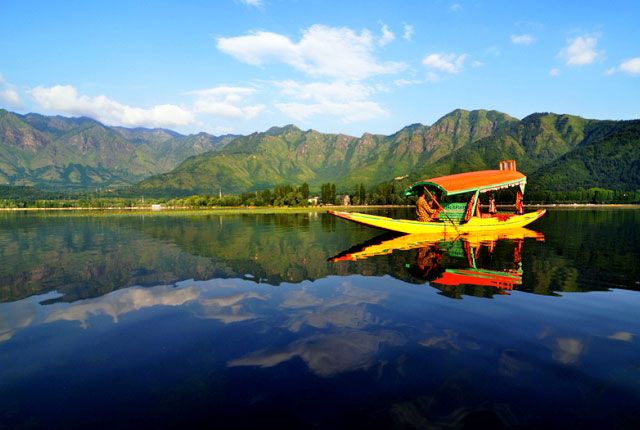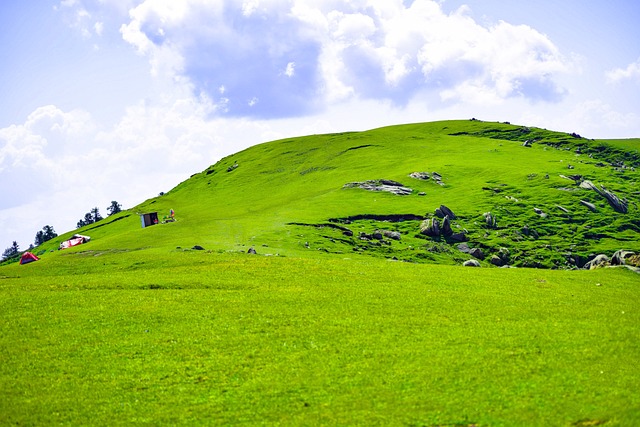
Verinag Spring and Garden
Table of Contents
ToggleOverview
The Kashmir Valley has always been remembered for its excellent natural beauty, historical significance, and cultural heritage. It is the home to some of India’s most iconic places, including Verinag Spring and Garden – a place with an integration of nature, history, and culture. Located on the southeastern side of Jammu and Kashmir, Verinag finds itself at the forefront due to its spiritual, ecological, and architectural importance. The Verinag Spring is the source of the Jhelum River, while the Verinag Garden in itself is an oasis that offers Mughal-style architecture, giving a serene abode for the visitor.
This comprehensive guide will take you through all the details of Verinag Spring and Garden, starting from interesting history and cultural importance to the most spectacular natural landscapes. We will also give you some important travel tips, nearby attractions, and accommodation options to make your visit an enjoyable and memorable one. If you are a nature lover, history enthusiast, or adventure-seeker, then Verinag has in store for you an experience that is one of a kind.
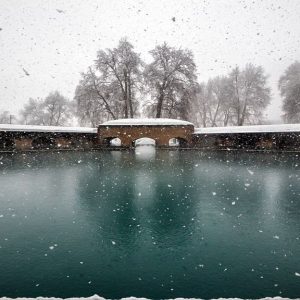

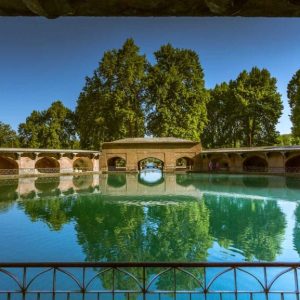
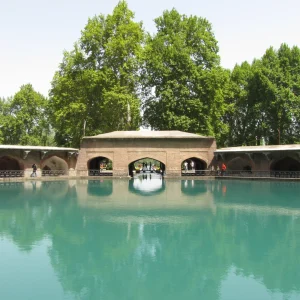
Verinag Spring: The origin of River Jhelum
It not only stands among the most picturesque places in Kashmir but also an important source of water for the Jhelum River-a very prominent historic and ecological landscape of this region. The spring stands in the Anantnag District and is about 80 kilometers southeast from Srinagar. According to its myth, it is considered to be the birthplace of the Jhelum River, which, after starting at Verinag, meanders through the valley and flows into Pakistan.
Geology and Origin of Verinag Spring
The spring is thought to be an underground system of aquifers, and as the local legend goes, the water flows from these. The water percolates down from the mountains above Verinag through the porous layers of rocks to come out at the spring. The water at Verinag is crystal-clear with a distinct turquoise-blue color that seems to glow, especially when sunlight falls on its surface. The water, the depth and consistency that spring give this uniqueness which no one else can even come close to within Kashmir’s enormous geography.
The spring itself is a large round pool surrounded by lush greenery and forms a very serene and majestic view. It is a protected site, and the surrounding ecosystems keep the purity of the waters of the spring, which keeps it a vital ecological resource for the local population and wildlife.
The Legend of Verinag: Myths and Folklore
There are always myths and legends associated with Kashmir land, and in this case, Verinag is not an exception. The lore surrounding the spring makes the place mysterious and spiritually appealing. Another legend goes about the spring bearing the name after Vernag, which happens to be the mythical serpent or dragon taking care of waters. Some accounts portray the spring as arising from movements by the snake that was to find the place where it could settle, and in its waters believed to have healing powers. Local people can describe the spring to be sacred to provide an individual with divine protection. The generation of stories explains that the spring waters of Verinag have a curing quality, as most pilgrims visit the spring for spiritual purification and physical purging.
Role of Verinag in Kashmir's Spiritual Landscapes
For thousands of years, the people of Kashmir have been worshiping the sacred spring at Verinag. Religious practices of the region involve making offerings and performing their rituals at the spring as people chant prayers seeking natural forces to bless them. Thus, the significance of the spring is an expression of the affinity that people of Kashmir have towards nature.
Historical Significance of Verinag Spring and Garden
The history of Verinag Spring is very closely related to the Mughal Empire, which was ruling Kashmir in the early 17th century. Verinag caught the attention of Emperor Jahangir as a source of natural beauty and as a water resource, which he visited in 1620. Being captivated by the charm of the place, he resolved to add more beauty to the place by commissioning the construction of a Mughal-style garden around the spring.
The development of the garden marked a significant moment in Kashmir’s history, as it became a symbol of the Mughal dynasty’s love for the natural beauty of the valley. The garden was designed to complement the spring, adding water channels, terraces, and pavilions that mirrored the classical Mughal designs seen in gardens such as the famous Shalimar Bagh in Srinagar.
The Mughal Influence: Building a Timeless Legacy
Jahangir’s influence is reflected in the careful construction of the garden as compatible with Mughal principles of symmetry, beauty, and affinity with nature. The intricate water channels and fountains are the work of Mughal artisans as evidence of their skills in engineering as they had done on-site.
Today, Verinag Spring becomes a piece of history itself with rich cultural importance but also in the role of bringing Kashmir into recognition as an integral center of Mughal architecture and garden culture. One fine example of natural beauty coming out in collaboration with architectural genius would be that of Verinag. But then comes Mughal Architecture of Verinag Garden.
Verinag Garden is an excellent example of Mughal landscape design and is known for its magnificence, symmetry, and the presence of water body at the centre. The classical style of the Mughal garden can be seen in this well-managed garden – Geometric Layout, Water Channel, and Greenery. This beautiful garden welcomes the visitor for a leisurely stroll on its pathways, terraces, and pavilions.
Important Attractions of Verinag Garden
Water Channels and Fountains: In the middle, the central feature of the garden is the Verinag Spring, from which water channels come forth in multiple lines, passing all over the entire garden. Water fountains and cascading water create a soft and soothing soundscape that heightens the peacefulness of the environment.
Symmetrical designs: Mughal gardens are characterized by their symmetrical designs, and Verinag is not an exemption. The flowerbeds, trees, and pathways are arranged in a balanced way to help bring tranquility to the garden. The realization in the garden mirrors the aesthetic delight of the Mughals and their reverence for the creation.
Pavilions and Buildings: The gardens have domed pavilions and small houses made from the local stone. These pavilions are available for shade while viewing the beauty. The Spring Pavilion is the most striking and is near the spring. Its view is exquisite, with the beauty of the whole garden spread.
Terraced Lawns: The garden is divided into several levels of terraced lawns planted with flowers, trees, and ornamental plants. In the spring and summer months, the lawns are full of life and colors, enhancing the beauty of the garden.
Restoration and Preservation
The Verinag Garden has experienced different restoration and conservation phases to sustain its Mughal grandeur. Restorations are made with much effort to restore the original traits but with contemporary techniques so that it may continue its glory. It is one of the significant cultural and historical spots for Kashmir, and people from all around the world come here to enjoy the heritage of the Mughal Empire.
Flora and Fauna of Verinag: A Biodiversity Hotspot
Verinag is a place of much historical importance as well as richness in architecture. Verinag has been an eldorado for nature lovers too, who have enjoyed various flora and fauna around it. It would prove to be the dream destination of those interested in biodiversity and photographer.
Flora: Lush and Different Landscapes
There are a number of native plants along the borders of the Verinag Garden. The place is renowned for its rich varieties of wildflowers, roses, and tulips that bloom during spring and summer. In addition to flowering plants, the garden has fruit-bearing trees like apples, cherries, and apricots, adding a dash of color and fragrance to the surroundings.
The surrounding forests have coniferous trees mainly pine, cedar, and deodar. These trees are shadows and the shades to local wildlife. The scenery of the area is enhanced with lush green pastures spread over the hilly surfaces that are biodiversity-rich areas.
Fauna: Wildlife and Birdwatching
There are quite a few species of wildlife that can be found here within the Verinag and surrounding the area. Birds in the area always delight and amaze birdwatchers since there are several migratory birds which come over to the area seasonally. Some of the common species always spotted here are the Himalayan monal-an exquisite pheasant with plumage that appears to show shades of change from iridescence, snow pigeons, kestrels, and woodpeckers.
These are habitats to such species like the Kashmiri red stag, wild boars, and the Himalayan brown bear among others. Some of the mini wild animals and their insects, provide it with this ecological diversity
Travel Routes and Tips
How to Reach Verinag
Verinag is about 80 kilometers from Srinagar. Road communications connect the region. The road route connecting Verinag is as below:
- By Air: The nearest airport to reach Verinag is Sheikh-ul-Alam International Airport, which is situated in Srinagar, at an approximate distance of 80 km. After reaching there, you can hire a taxi or even a car to travel to Verinag. This is so picturesque from Srinagar that takes any tourist up to the Valley and hence forms one of the best sights that the Valley offers.
- By Train: The nearest railway station from Verinag is in Jammu, which is 200 km away. One can take a train to get there and then hire a taxi or get on the bus to reach Verinag from the station.
- By Road: The most convenient mode to reach Verinag is by road. You can hire a taxi or bus from Srinagar to get to Verinag. Roads are good and the journey takes almost 2-3 hours based on traffic and road conditions.
Best Time to Visit Verinag
The best time to visit Verinag is based on preference:
- Spring (April to June): The climate is warm and pleasing, flowers are at full bloom, and colors in the garden brighten up. It is the perfect time to see the beauty.
- Summer (July to September): This season of summer has warm climate and a very green landscape. These months mark the time when gardens look at their best.
- Winter (December to February): If you prefer snow, then it will make winters a wonder in Verinag as it goes on to dress in white-cloaked scenery with silence all over.
Accommodation Options near Verinag
There isn’t any immediate accommodation facility in Verinag but there are closest cities which are Srinagar and Anantnag. Starting from luxury class to budget accommodations are available according to the wallet.
Srinagar: The destination has everything. There are houseboats at Dal Lake to luxury hotels. However, key options include Vivanta Dal View and The Lalit Grand Palace.
Anantnag: If you want an experience that’s a little less noisy and within nature’s clutches, you might want to consider guesthouses or mid-range hotels in Anantnag.
Conclusion
History, culture, and natural beauty all blend together at Verinag Spring and Garden. Verinag, a treasure to be reckoned with as far as history and the beauty of a Mughal garden are concerned, or simply that sense of peacefulness around it; this place guarantees to offer its visitor a serene exploration with moments to reflect. One would surely enjoy including this to their itinerary within the Kashmir Valley places to visit.
How to book Kashmir tour?
Contact a travel agency that specializes in Kashmir tours. You can reach out to the following for assistance:
- Phone:
- +91 7889 655596
- +91 7006 891267
- Email:
Inquire about tour packages, itineraries, and pricing, and confirm your booking for a memorable winter experience!
People Also Ask
What is Verinag Spring?
Verinag Spring is a natural freshwater spring located in the Anantnag district of Kashmir, known for its crystal-clear waters that originate from the foot of the majestic Himalayan mountains.
Where is Verinag Spring located?
Verinag Spring is located in the town of Verinag in the Anantnag district of Jammu and Kashmir, India, approximately 80 kilometers south of Srinagar.
What makes Verinag Spring unique?
Verinag Spring is unique due to its stunning blue waters and historical significance. It is one of the largest freshwater springs in Kashmir and is surrounded by lush gardens and ancient Mughal architecture.
How deep is Verinag Spring?
Verinag Spring has a depth of around 18 meters (59 feet) and serves as a major source of water for the region, flowing into the Jhelum River.
Is Verinag Spring part of the Jhelum River system?
Yes, Verinag Spring is the primary source of the Jhelum River, which is one of the main rivers of Kashmir, providing irrigation and water supply to the region.
What is the historical significance of Verinag Spring?
Verinag Spring has historical significance due to its association with the Mughal Emperor Jahangir, who visited the spring and commissioned the construction of the nearby garden in the early 17th century.
What is Verinag Garden?
Verinag Garden is a Mughal-style garden built by Emperor Jahangir around the Verinag Spring. The garden is known for its symmetrical layout, fountains, and terraced levels, offering a picturesque view of the surrounding mountains.
When was Verinag Garden built?
Verinag Garden was constructed in the early 17th century by Mughal Emperor Jahangir. The garden was designed in the typical Mughal style, with flowing water, terraced lawns, and elaborate fountains.
What is the best time to visit Verinag Spring and Garden?
The best time to visit Verinag Spring and Garden is during the spring (March to May) and autumn (September to November) months. These seasons offer pleasant weather and stunning natural beauty, with colorful flowers and clear skies.
How do you get to Verinag Spring?
Verinag Spring is easily accessible by road from Srinagar. You can travel by car or taxi, taking the road that connects Srinagar to Anantnag. The spring is approximately 80 kilometers south of Srinagar.
Is there an entry fee for Verinag Garden?
Yes, there is a nominal entry fee to visit Verinag Garden. The fee helps maintain the garden and its facilities. It is advisable to check local regulations for the latest entry fees before visiting.
Can I visit Verinag Spring year-round?
Yes, Verinag Spring can be visited throughout the year. However, the weather conditions vary, and visiting in the spring and autumn offers the most pleasant climate for sightseeing and photography.
Is Verinag Spring considered a holy site?
Yes, Verinag Spring is considered sacred by locals, especially in the Muslim community. It has spiritual significance, and people believe that its waters possess healing properties.
What can you do at Verinag Spring?
At Verinag Spring, you can enjoy the natural beauty of the clear waters, take photographs, stroll through the garden, and enjoy the cool, peaceful atmosphere. It’s also a great spot for picnics and relaxation.
Are there any nearby attractions to Verinag Spring?
Yes, nearby attractions include the ancient Mughal gardens in Srinagar, the Amarnath Cave Shrine (a short drive away), and the Pahalgam area, which is known for its scenic beauty and trekking opportunities.
What is the significance of the blue water at Verinag Spring?
The blue water at Verinag Spring is one of the most striking features of the spring. It is believed that the water is so pure because it comes directly from the snowmelt of the surrounding mountains, giving it a deep, vibrant blue hue.
Can I swim in Verinag Spring?
No, swimming in Verinag Spring is not allowed, as the spring is considered sacred and its water is a vital resource for the region. It is also a protected natural site.
What are the main attractions of Verinag Garden?
The main attractions of Verinag Garden include the flowing water of the spring, the symmetrical Mughal-style layout, terraced lawns, fountains, and the beautiful backdrop of the Himalayan mountains.
Are there any facilities available at Verinag Garden?
Yes, Verinag Garden has basic tourist facilities, including a small parking area, restrooms, and picnic spots. There are also local vendors selling snacks and souvenirs.
Is Verinag Spring a popular tourist destination?
Yes, Verinag Spring is a popular tourist destination, particularly for nature lovers, photographers, and those interested in Mughal architecture. It attracts both domestic and international tourists throughout the year.
How long does it take to visit Verinag Spring and Garden?
A typical visit to Verinag Spring and Garden lasts around 1-2 hours, depending on how much time you spend exploring the garden, enjoying the scenic views, and taking photographs.
What is the water source of Verinag Spring?
The water of Verinag Spring originates from the snowmelt of the nearby mountains, which feed the spring through underground channels. The purity and clarity of the water are remarkable, making it a prime natural attraction in Kashmir.
Can I visit Verinag Garden with children?
Yes, Verinag Garden is a family-friendly destination, ideal for visits with children. The garden provides plenty of open space for kids to explore, and the peaceful atmosphere makes it a relaxing environment for families.
What should I wear when visiting Verinag Spring and Garden?
When visiting Verinag Spring and Garden, it’s advisable to wear comfortable clothing and sturdy shoes for walking. Depending on the season, you may want to bring a jacket or sweater, especially in cooler months.
What is the best way to explore Verinag Spring and Garden?
The best way to explore Verinag Spring and Garden is by taking a leisurely walk through the garden, enjoying the views of the spring, and visiting the fountains and terraced areas. The spring is surrounded by lush greenery, making it perfect for nature walks and relaxation.



